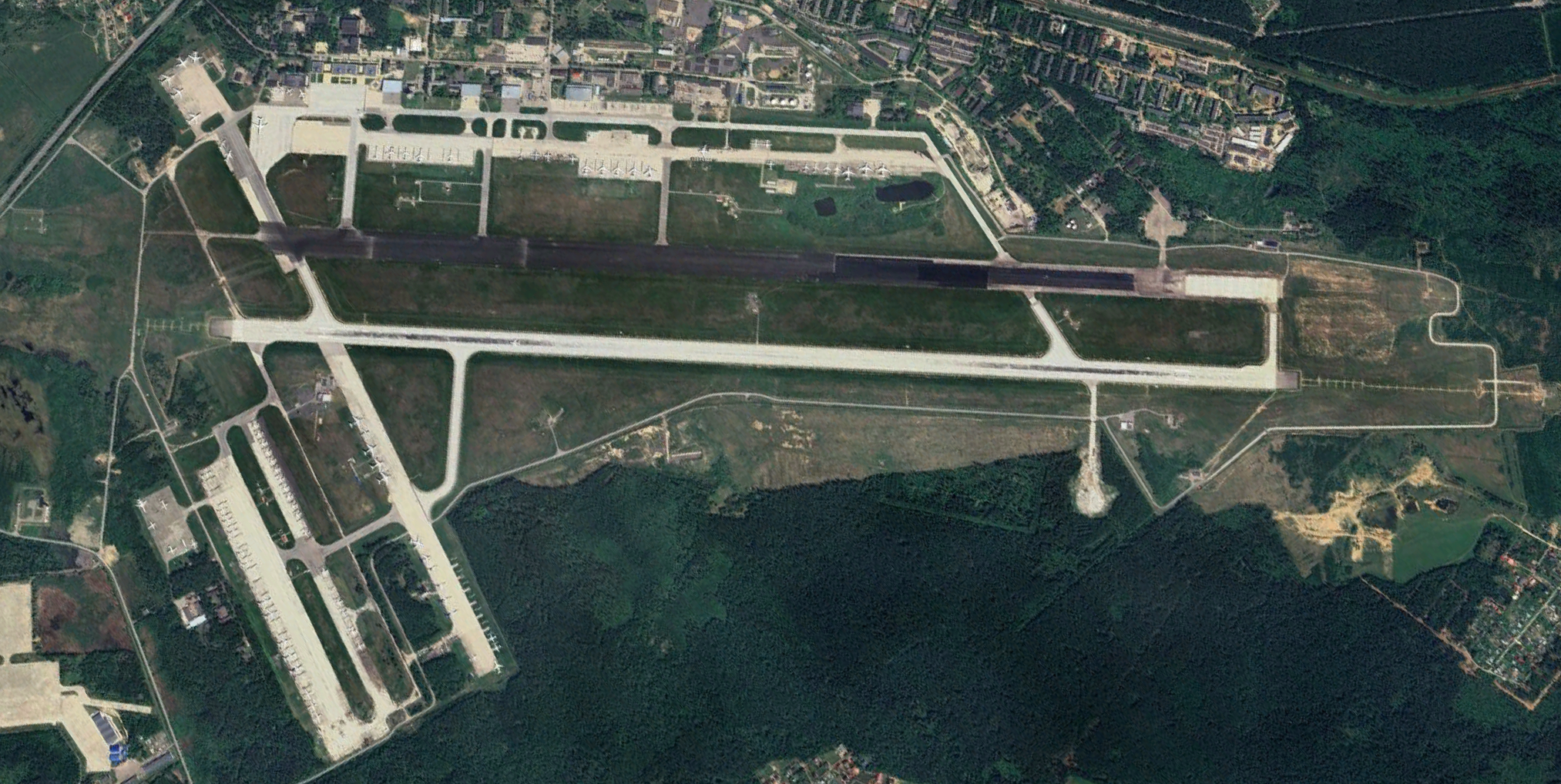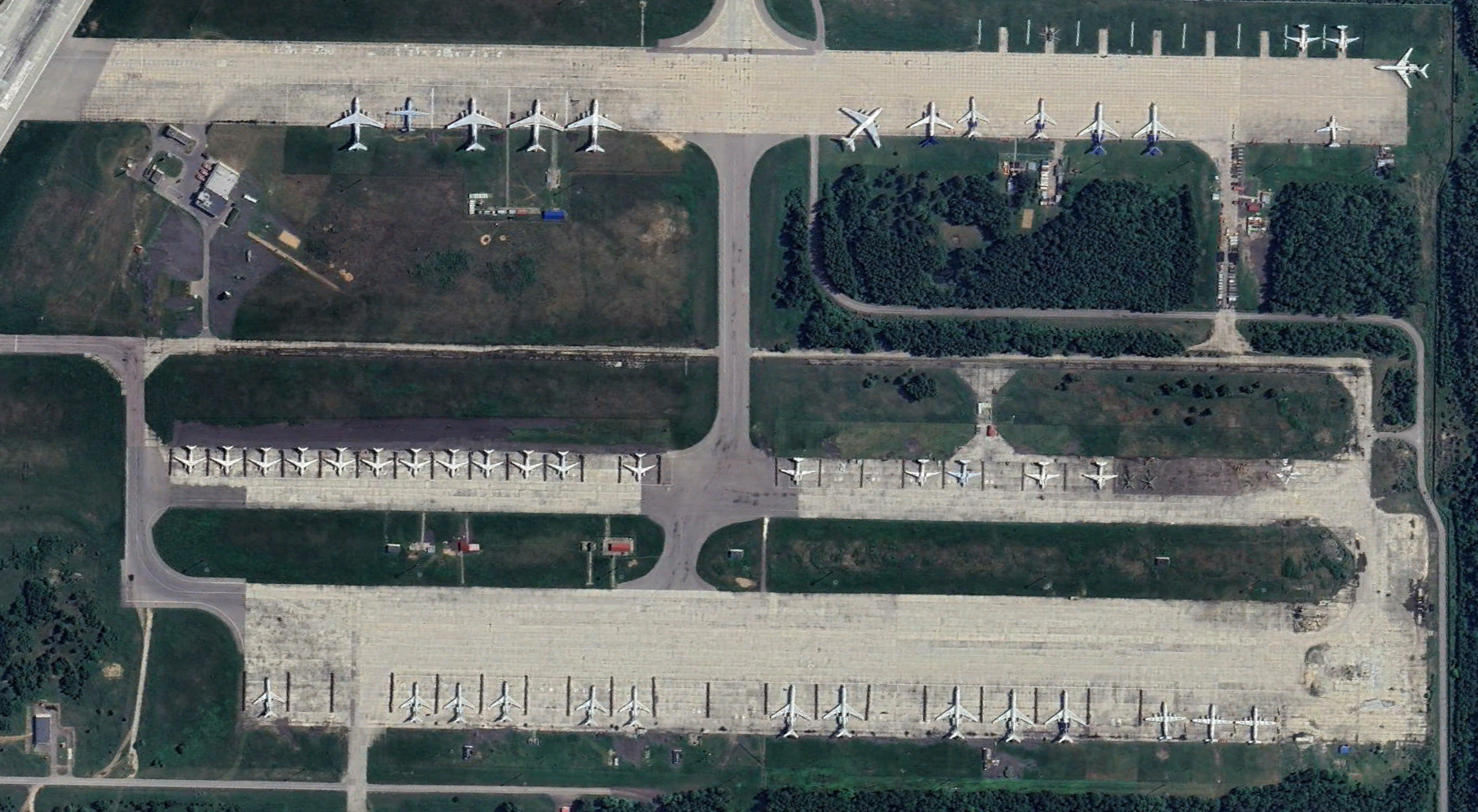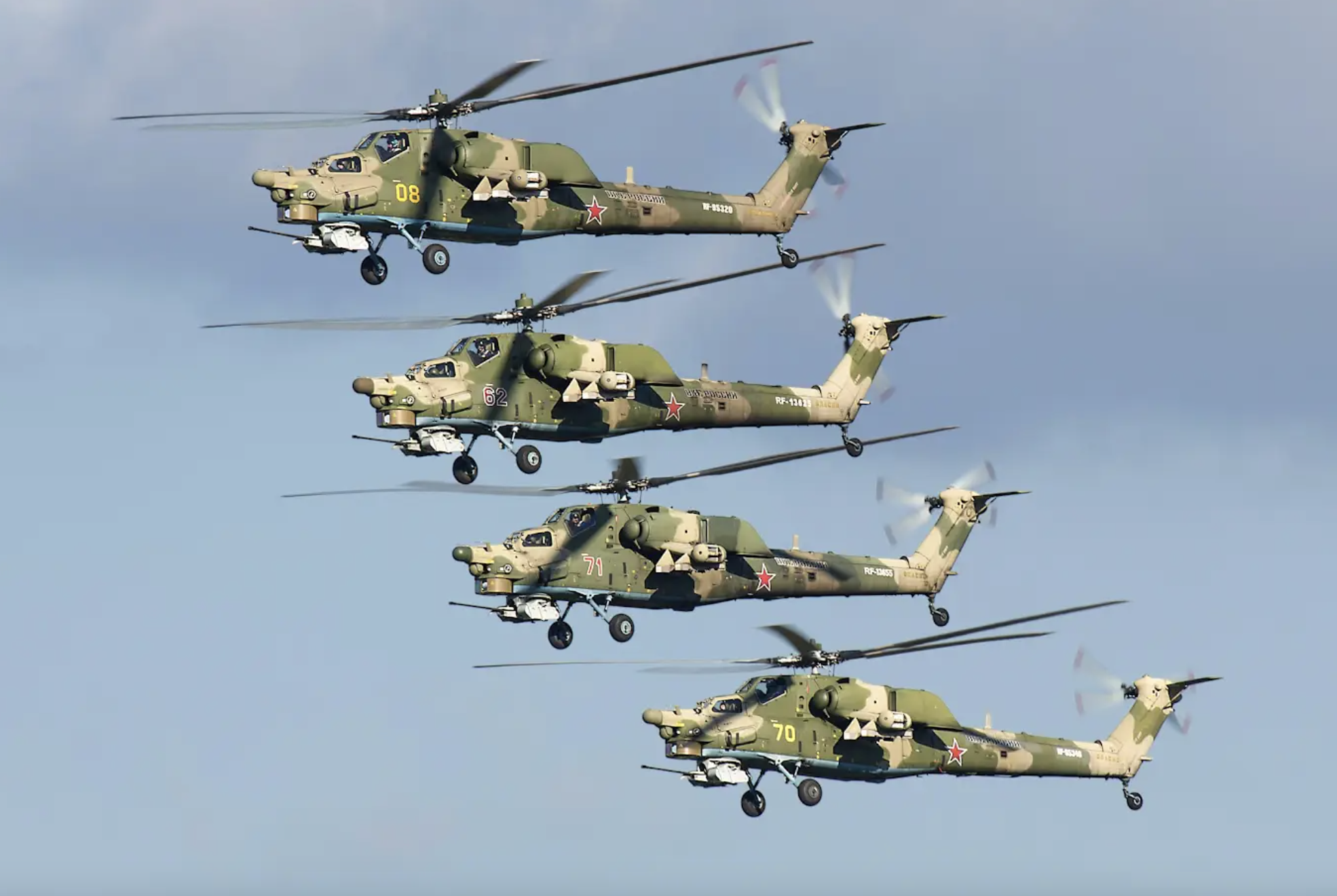One of Russia’s most important airbases, Chkalovsky, located less than 20 miles from Moscow, is claimed to have been struck by saboteurs. According to the Ukrainian military intelligence service, two fixed-wing aircraft and a helicopter were “blown up” by explosive charges placed on them, during an operation carried out on September 18.
A satellite image supposedly taken of the base after the raid has been widely shared on social media, although it’s not possible to confirm whether some of the aircraft shown were indeed attacked, let alone to determine the level of damage. Two other, blurred photos have emerged that are purported to show a view over a perimeter wall at Chkalovsky, presumably taken by one of the saboteurs. Again, it’s not possible to ascertain any details about a potential raid from these photos alone.
In a statement on X, formerly known as Twitter, Anton Gerashchenko, an advisor to the Minister of Internal Affairs of Ukraine, provided the following account of the operation, providing information that he attributed to the country’s military intelligence service or GUR:
“Unidentified saboteurs blew up two airplanes and a helicopter in Moscow region on September 18. The sabotage reportedly took place at the Chkalovsky Air Base, where government planes, “doomsday” planes, and reconnaissance aircraft are based. Unidentified persons placed explosives on a closely guarded airfield and blew up An-148 and Il-20 aircraft (both belonging to the 354th Special Operations Aviation Regiment), as well as a Mi-28N helicopter, which had previously been actively engaged in shooting down attack drones. Due to the damage, quick repair is impossible. The helicopter’s tail section was damaged. Another An-148, which was parked next to the others, sustained minor damage.”
In a statement on the Telegram messaging app, the GUR also said that “unidentified saboteurs” were responsible for the attack on what it described as a “heavily guarded airfield.” However, the GUR stopped short of claiming that the first three aircraft in question were destroyed, instead stating that they were “badly damaged.”
The GUR also said the incident caused “considerable hysteria in the highest military corridors” due to the fact that the airbase hosts “government aircraft, so-called ‘doomsday planes,’ and special aircraft (reconnaissance aircraft).”


As to the aircraft claimed to have been hit, the An-148 twin-engine regional jet was designed in Ukraine but also built in Russia and is used by the Russian Ministry of Defense as an executive transport. The defense ministry ordered 15 examples, which are now based at Chkalovsky, Levashovo, Rostov-on-Don, and Yekaterinburg. Since production was terminated after the breakdown in Russia-Ukraine relations in 2014, replacing these relatively new aircraft is by no means easy.

The reported loss of an Il-20M, however, would represent a much more significant blow to the Russian military. Known to NATO as Coot-A, the Il-20M is a radar reconnaissance and electronic intelligence (ELINT) aircraft based on the 1950s-era Ilyushin Il-18 airliner. Only around a dozen of these aircraft are thought to be operated by the Russian Aerospace Forces on behalf of the Main Intelligence Directorate (GRU) of the General Staff of the Russian Armed Forces. Replacing these aircraft on a one-for-one basis is now nearly impossible as there is no immediate successor in the same role.

The Il-20M is used for intelligence-gathering missions around the world, including over the Baltic Sea, the Sea of Japan, and the Mediterranean. One example was mistakenly shot down in September 2018 by Syrian air defenses, as you can read about here. Most of the Il-20M fleet is based at Chkalovsky, together with the Il-22 airborne command post version and derivatives. One Il-22 was shot down, apparently by the Wagner Group, during the attempted coup in Russia in June this year.
As the late Ukrainian Air Force MiG-29 pilot Andrii Pilshchykov, better known as “Juice,” told The War Zone last year, the Il-20 is a particular headache for the Ukrainians, due to its ability to snoop on electronic emissions, helping locate military positions including ground-based air defense systems.
Finally, the Mi-28N Havoc-B is one of the most important anti-tank and attack helicopters used by Russia in its war in Ukraine, with the latest Mi-28NM also having been employed, together with the new-generation LMUR air-to-ground missile, which you can read more about here. Around a dozen Mi-28s have already been lost in the Ukrainian campaign, from a pre-war total of approximately 110 examples.

Interestingly, the GRU account states that the Mi-28N in question had been used in an air-to-air role, helping protect the Russian capital region against the now ever-present threat of Ukrainian drone strikes. This is a role in which we have recently seen the Mi-28 active, too, based on videos posted to social media, including the one below.
At this stage, there’s no independent verification of the GRU’s claims, although Russia, at least, has confirmed that some kind of sabotage operation did take place.
There have been apparent sabotage raids on airbases deep in Russia previously. In November 2022, we reported on an apparent attack against a Russian airbase in the Pskov region, in the far west of the country, which was filmed by the operatives before they placed explosives on Ka-52 Hokum-B attack helicopters. You can read about that incident in detail here.
In May this year, meanwhile, Russia’s Federal Security Service (FSB) confirmed a sabotage attack against a Russian strike or reconnaissance aircraft at an aircraft factory in Siberia. This was reportedly an arson attack, although it’s unclear if the aircraft in question was actually airworthy at the time.
A sabotage attack on Chkalovsky is an altogether bolder undertaking, however, due to the airbase’s unique importance.
This base is responsible for the 8th Aviation Division of Special Purpose (8 ADON, to give its Russian acronym) which supports the commanders of the Russian Armed Forces as well as state authorities in wartime. Its fleet of around 100 passenger and transport aircraft is used to move military personnel, including special forces, and support foreign operations, including in Syria.
Even more critical, however, are Chkalovsky’s special mission aircraft, which as well as the aforementioned Il-20M and Il-22 also include the Il-80 airborne command post and Il-82 communications relay aircraft, which have a strategic wartime role, equivalent to the U.S. military’s “doomsday aircraft.”

Among the best-known aircraft assigned to Chkalovsky are those operated by the 223rd Detachment, technically a commercial entity, but previously part of the 8th Aviation Division. It is responsible for around 20 Il-62, Il-76, Tu-134, and Tu-154 aircraft that are used to transport government officials, including President Vladimir Putin himself.
Regardless of whatever damage may have been inflicted on aircraft at the base northeast of Moscow, if saboteurs did manage to penetrate Chkalovsky it clearly points to major security loopholes, and once that could, in the most serious instance, have an effect on the country’s overall military and strategic readiness. Even the loss or damage of one of the presidential jets would be a colossal embarrassment, although in this case, the 223rd Detachment seems to have been untouched.
On the other hand, even Russian airbases housing other strategic assets have been subject to incursions in the recent past, by apparent criminal elements, while other airfields have been penetrated by drunken soldiers in command of an armored vehicle, for example.

With that in mind, a team of well-organized saboteurs having got through the fence at Chkalovsky is far from unthinkable. At this stage, however, there is little in the way of evidence to back up the GUR’s claims, although we will watch this story with interest for any further developments.
Contact the author: thomas@thedrive.com
